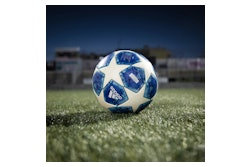Copyright 2018 The Buffalo News
All Rights Reserved
The Buffalo News (New York)
Football can be hazardous to your health. That fact has been well-established in the past few years, as details have surfaced about the lasting impact of concussions.
The National Football League and Commissioner Roger Goodell have often gone into a defensive crouch when it comes to concussion issues, but now have moved past the denial stage. In September 2016, the league launched a $100 million initiative for technological improvements and medical research related to head injuries. And late last season they beefed up the concussion protocol for players.
Another good sign came Tuesday when the league's owners approved new rules to make kickoff plays less dangerous.
There's been talk in the league of doing away with kickoffs entirely. The problem is the risk of brain damage. Last year 291 concussions were documented in the NFL, the highest number since the league began keeping track. NFL statistics show that players are five times more likely to suffer a concussion on a kickoff than on any other play.
Steve Tasker, the all-time great Buffalo Bills special teams player, took part in a panel convened by the NFL to address the kickoff problem. Tasker said that 11 concussions suffered by players in the past three seasons came on touchbacks - plays that are whistled dead after the kickoff sails into or beyond the end zone.
"(The league was) appalled by the fact on a play that didn't even count, guys were getting concussions because guys would blow each other up, not knowing the ball's out of the end zone," Tasker said.
Under the new rules for this season, players on the kicking team will be clustered near the ball, and they won't get a running start when the ball is kicked. For the receiving team, wedge blocks are no longer allowed. Kickoffs will look more like punt plays, with more emphasis on speedy skill players and less on big bodies flying around.
And there's a change geared to touchbacks. As soon as the ball hits the end zone, it's immediately ruled a touchback, rather than waiting for a receiving player to pick up the ball and kneel with it. This will cut down on instances where players on the coverage and return teams needlessly race at each other on a collision course, only to have the play stopped dead by a whistle.
Also new this year: The NFL is cracking down on players lowering their heads when initiating contact. This applies to players at every position, whether they are making a tackle or trying to evade one. Leading with the helmet will result in a 15-yard penalty and possible ejection from the game. The game officials can eject a player, or it can be done by the league office in New York after reviewing a replay.
That might have been a handy rule to have in place last Dec. 3, when Bills cornerback Tre'Davious White intercepted a New England pass intended for Rob Gronkowsi, the Patriots' big tight end who is a Western New York native. White fell to the ground, where a frustrated Gronkowski plowed into him out of bounds. The dirty hit caused White to be put in concussion protocol. The NFL later gave Gronkowski a one-game suspension for the hit, but under the new rules the league might have ejected him from the game in Orchard Park.
One reason for the rise in the concussion total was that more players are reporting them these days than in years past. What players and coaches used to call "getting your bell rung" is actually a form of brain damage.
More than 100 former NFL players have been diagnosed, after their deaths, with having suffered from chronic traumatic encephalopathy (CTE), a degenerative brain condition believed to be caused by repeated hits to the head.
Darryl Talley, a linebacker during the Bills' Super Bowl era in the early 1990s, has been public about health challenges he has struggled with in recent years. He and his wife, Janine, have described Talley's mood swings, memory loss and other struggles that they attribute to CTE.
It's good to see the NFL taking steps to protect its players, something other sports leagues should emulate. In hockey, former Philadelphia Flyers star Eric Lindros has been campaigning for the NHL to fund research to protect its players' health.
Lindros suffered six concussions in a two-year period. In Major League Baseball, catchers are particularly vulnerable to concussions, but so are others. Minnesota Twins first baseman Joe Mauer is one star whose career has been interrupted by brain injuries.
Tasker told SI.com that he was glad to see the NFL evolving. "The rules," he said, "at least the rules that can get guys hurt - are not sacred."
Read More of Today's AB Headlines
Subscribe to Our Daily E-Newsletter
Terms and Conditions Privacy Policy































